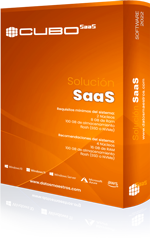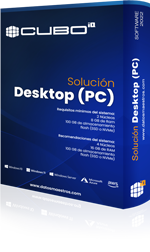The Best Data Quality Tools 2023 | Features & Comparison
Inaccurate information may be disastrous for a company.
It’s annoying for everyone involved in customer service, including marketing, sales, and customers. False information is detrimental to establishing rapport.
U.S. businesses may be underestimating the extent of the problem with their data by as much as 32 percent, according to a recent Experian research.
It would be foolish to disregard such a costly issue.
Organizations in the United States lost $611 billion due to inaccurate data.
There is a domino effect when reliable information is lacking:
You have been unable to locate any relevant connections at other companies.
The administration of electronic mailing lists fails.
With existing clients, salespeople have trouble even getting in touch with the relevant individuals.
In spite of their popularity, customer loyalty schemes fail to deliver.
Any decision based on statistics is useless and wasteful.
Worryingly bad data is a true crisis. This is a firm requirement.
A set of questions to help you evaluate the quality of your data
Examining the existing status of your data can provide light on your requirements. As a group, ask yourself and your peers:
- To whom does the data belong?
- Does the information serve your purposes?
- Can we have faith in these numbers?
- How much of your information is complete, correct, and usable?
- Does anybody ever have issues with the information provided? Which of these is the most often heard gripe?
- How do you ensure the quality of your data, and what methods do you use? Are we keeping tabs on them?
- How does the upkeep and correction of your data currently work?
In order to maintain high-quality data and implement a quality control system, we have produced this guidance on how to choose the appropriate instrument.
The Best Quality Data Tools 2023
By 2023, the following will have emerged as the best data quality tools:
- Windpure
- Cubo IQ – Datos Maestros
- Clarity – Tibco
- DME – Dataladder
Inaccurate information may be disastrous for a company. It’s annoying for everyone involved in customer service, including marketing, sales, and customers. False information is detrimental to establishing rapport.
U.S. businesses may be underestimating the extent of the problem with their data by as much as 32 percent, according to a recent Experian research.
It would be foolish to disregard such a costly issue. Organizations in the United States lost $611 billion due to inaccurate data.There is a domino effect when reliable information is lacking:
You have been unable to locate any relevant connections at other companies.
The administration of electronic mailing lists fails.
- With existing clients, salespeople have trouble even getting in touch with the relevant individuals.
- In spite of their popularity, customer loyalty schemes fail to deliver.
- Any decision based on statistics is useless and wasteful.
- Worryingly bad data is a true crisis. This is a firm requirement.
At what point in time should a business start looking into purchasing a data quality management tool?
At what point in time should a business start looking into purchasing a data quality management tool?
Acurracy and speed
A number of factors, including human costs and data maintenance frequency, might affect this.
Examine the quantity of available data points to estimate how long it would take your personnel to complete the work.
Hiring VAs in another country could be more cost-effective if you just have to clean your data once a year. Keep the aforementioned required minimum time in mind (3-5 minutes per data point).
First name, last name, job title, firm, phone number, and email address are all examples of data points in this context. But there may be extras included.
The investment is justifiable if the price of labor is higher than the price of the instrument.
The cost of a tool drops dramatically if you are more careful with your data, pay higher salaries, and clean it often (every week, month, or quarter).
When a key part of your company plan is dependent upon machines. Data cleansing must be automated when an organization’s strategy is predicated on the use of automation technologies.
Ask yourself whether it makes sense to automate your marketing and sales process and then have a person clean data manually at each stage. That’s not what we’ve come to believe.
Only with the help of automatic data cleansing can a completely tailored and automated client journey be implemented.
Cost
A number of factors, including human costs and data maintenance frequency, might affect this.
Examine the quantity of available data points to estimate how long it would take your personnel to complete the work.
Hiring VAs in another country could be more cost-effective if you just have to clean your data once a year.
Keep the aforementioned required minimum time in mind (3-5 minutes per data point).
First name, last name, job title, firm, phone number, and email address are all examples of data points in this context. But there may be extras included.
The investment is justifiable if the price of labor is higher than the price of the instrument.
The cost of a tool drops dramatically if you are more careful with your data, pay higher salaries, and clean it often (every week, month, or quarter).
When a key part of your company plan is dependent upon machines
Data cleansing must be automated when an organization’s strategy is predicated on the use of automation technologies.
Ask yourself whether it makes sense to automate your marketing and sales process and then have a person clean data manually at each stage
That’s not what we’ve come to believe.
Only with the help of automatic data cleansing can a completely tailored and automated client journey be implemented.
Which groups are important to consult before settling on a data quality tool?
It’s important to think about who will be accessing your company’s data before settling on a product. Not having their support increases the risk that it won’t work with their current infrastructure and procedures.
Who is responsible for the information of customers?
Who is in charge of customer relationship management? But even if it is you, you should still consult with the other parties interested in the outcome. In the unlikely event that it is not you, this is the first person to be questioned about it.
Gather everyone for a conference call. Learn what standards and requirements they have for data quality.
Marketing team
Whoever is in charge of marketing at your company, whether it is the Chief Marketing Officer, Vice President of Marketing, Marketing Manager, or Marketing Manager. The majority of today’s chief marketing officers rely heavily on data and use it for:
- Creation of the most productive set of technologies.
- Providing evidence of a positive return on investment.
- Attempting to shift the focus of the company to the client.
- Knowledge extraction and strategy refinement.
- Producing more MQLs (Marketing Qualified Leads).
- Individualizing one’s email correspondence.
- Taking care of mailing lists.
Points leader. - Analyzing customer information for a better marketing strategy.
- Fragmenting customer personas.
- Following identities as they transition across digital platform
In order to determine what type of integrations they need, you’ll need their opinion on the technologies they’re already employing. There is a widespread misconception that CMOs are ultimately accountable for driving the digital revolution. But they know exactly what they need to do to achieve the change they want to see in the world.
Sales team
A large variety of technologies and automated procedures are used in modern sales departments. They will collect information from a number of different sources, including the customer relationship management (CRM) system for contact and pipeline data and the enterprise resource planning (ERP) system for transactional data.
The effectiveness of a sales team’s metrics depends on the accuracy of their data. They must have faith in it.
When salespeople have to spend time updating data instead of making sales, the company loses money. One might compare every salesperson to a master chef. They’re great at what they do but hate cleaning up after themselves.
Thus, despite having processes in place to avoid the insertion of erroneous data, the CRM nonetheless seems cluttered most of the time. If sales areas aren’t shifted or if new salespeople aren’t tasked with taking on the consumers of their predecessors, this strategy may be successful.
Furthermore, when the underlying data is inaccurate or missing, sales automation systems are useless.
A sales leader needs information from inside the company as well. How many cold calls it takes to close a client, which leads have the quickest sales cycles, and which agents perform best are all tracked.
Their data requirements may coincide with marketing’s in an ideal world, but more often than not, they diverge.
In spite of their interest in data, some of them may be data-illiterate. Because of this, it’s possible that a brand new, complex data quality instrument won’t be adopted.
Information Technology team
Oftentimes it is this group that manages customer relationship management systems.
Nevertheless, this is not always the case.
The IT team is responsible for setting up and managing the company’s data infrastructure. However, the procedure for checking the accuracy of all that data is not always spelled out.
Discover the current state of affairs there and what features are required in a data quality tool. How can it be integrated into the IT department’s current processes?
Perhaps there is a method already available, but it isn’t being used. The question is how to win over the opposition.
As the leader of IT, the CIO’s primary focus should be on preserving a workable technology stack. It’s important that whichever solution you choose has little or no impact on the current technology infrastructure.
Variants of Interest Groups
Aside from yourself, inaccurate information might damage others in your firm.
Although they won’t have much of an impact on your decision, it’s nevertheless wise to keep them in mind when you evaluate potential new tools.
Incorrect phone numbers in customer relationship management systems are a common source of missed calls and other communication issues for salespeople.
Agents in customer service who field calls concerning misspelled names.
Unless marketers have access to more detailed information about their target audience, they will be unable to effectively target certain demographics or provide highly personalized messages.
These issues should provide you a clear view of where and how soon you need to update your data.
The stack is manageable. Select a tool that can be easily integrated, or better yet, doesn’t need any changes to the current technology stack.
What to look for in a data quality tool
One that meets the aforementioned criteria should be your primary focus. Additional features might make the system unfeasible to install due to their high cost or complexity.
Select a more basic tool if you’re only going to utilize half of its functionality. You may need to combine the tool with another if it lacks some of the functionality you want.
Select a tool that can grow with your needs if you anticipate the inclusion of advanced capabilities in the near future.
The price is a major consideration, however you can determine the optimal rate by figuring out:
- The necessary personnel to do the task in-house.
- How much time and money are being wasted due to inaccurate data.
- How often and how soon you require the information to be cleansed.
- How advanced your data infrastructure is at the moment and how many features you require.























